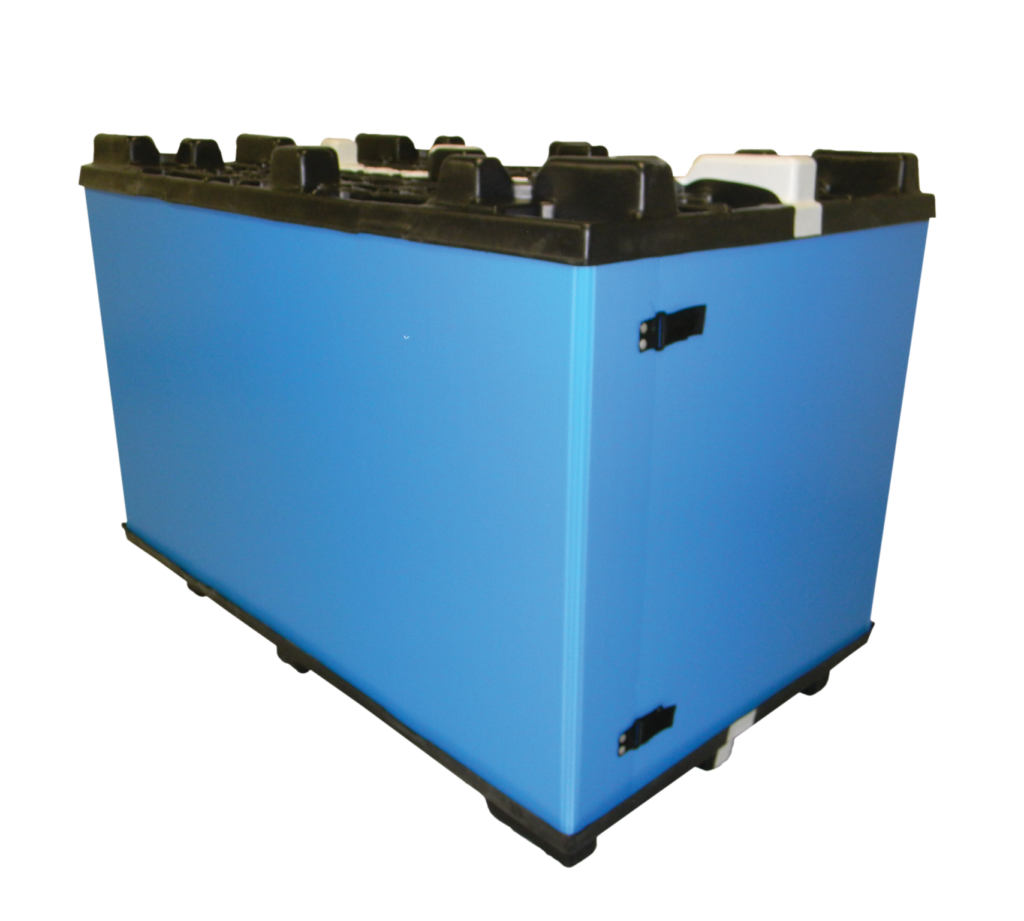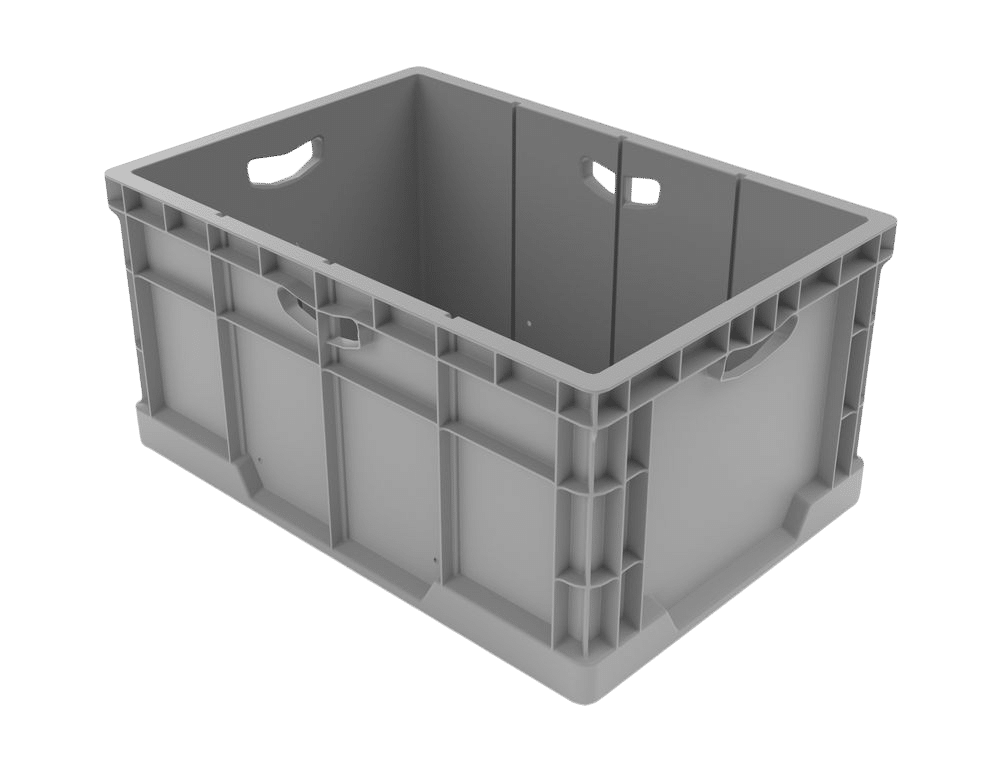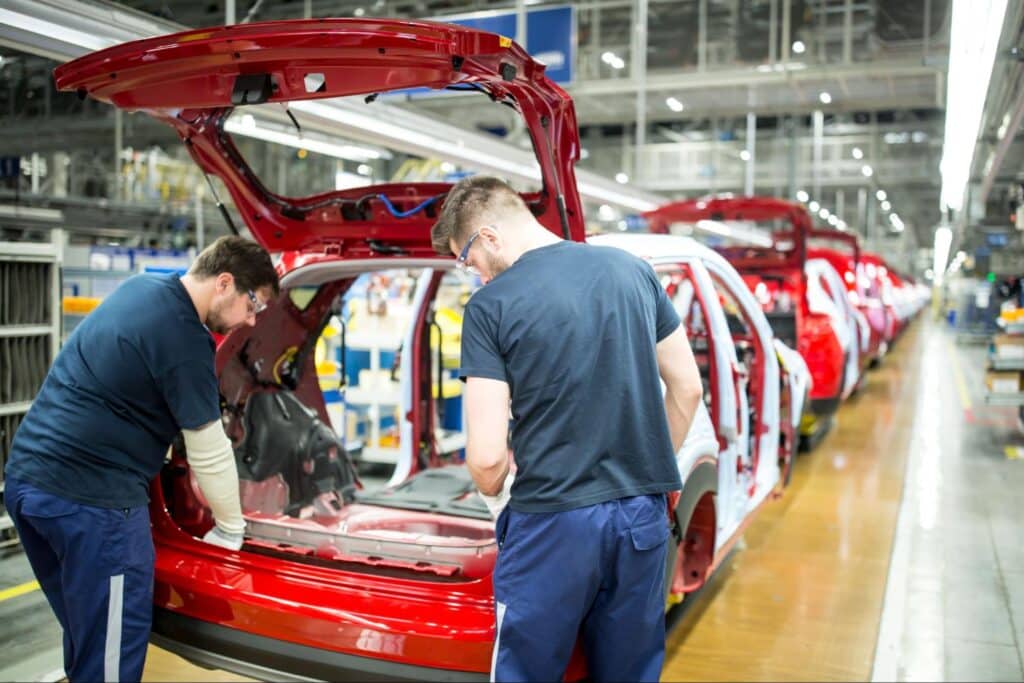Efficient packaging is fundamental to optimizing operations in the automotive sector. Returnable packaging systems offer a durable, reusable alternative to single-use solutions, designed to be circulated multiple times through the supply chain. By adopting this model, companies can achieve a triple win: significant long-term cost savings by eliminating disposable materials, enhanced sustainability through waste reduction, and improved operational efficiency by safeguarding sensitive components with standardized containers.
As a trusted provider of custom-designed industrial packaging, Universal Package is recognized for its commitment to helping automotive companies achieve these goals. We engineer solutions using durable materials like high-grade corrugated plastic and heavy-duty foam dunnage to protect the integrity of valuable components through every stage of transport. This guide will explore the key benefits of returnable packaging in detail and provide a practical look at what it takes to successfully implement these systems in your logistics strategy.
The Triple Win: Key Benefits of Returnable Packaging

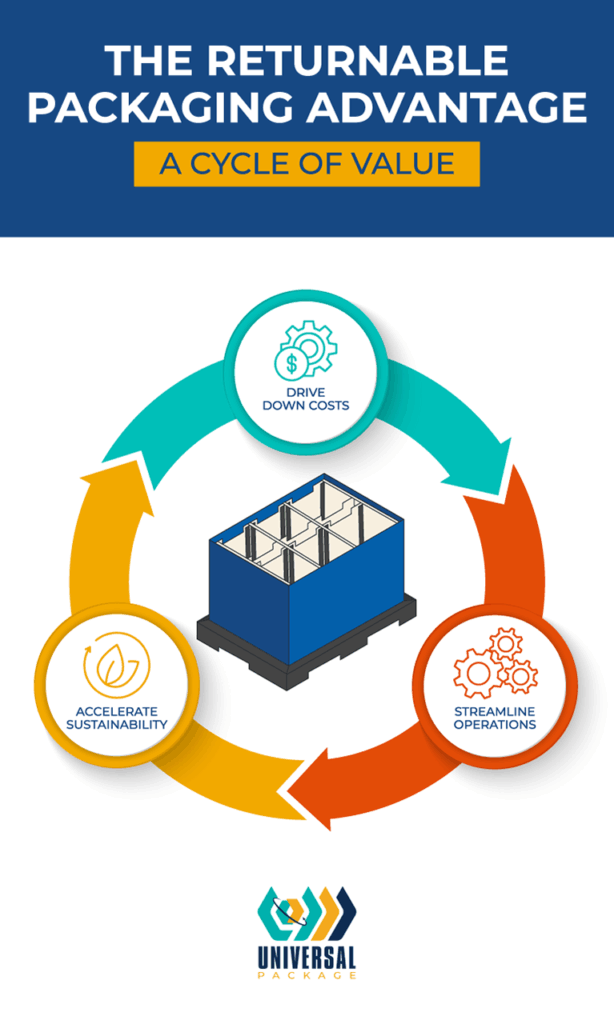
In today’s competitive automotive landscape, true logistical excellence is achieved when a single solution delivers multiple strategic advantages. Returnable packaging is precisely that solution, offering a powerful “triple win” that simultaneously enhances financial performance, strengthens environmental commitments, and streamlines complex supply chain operations.
By moving beyond the linear model of single-use materials, companies can unlock a cycle of continuous value that impacts every stage of production and distribution.
Cost Benefits of Returnable Packaging for Automotive Companies
Returnable packaging can lead to long-term cost savings, although the extent of these savings depends on specific operational conditions. While the initial investment may be higher compared to disposable alternatives, many companies find that reduced expenditure on single-use materials, extended container lifespans through repeated use, and optimized shipping strategies collectively help lower overall costs over time.
Key cost advantages include:
- Reduced expenditure on single-use materials by transitioning away from disposable options to systems that embrace reuse—helping to counter the drawbacks of single-use materials
- Extended container lifespan through repeated use
- Lower freight expenses with optimized shipping capacity through efficient designs
- Potential for improved return on investment when combined with systematic tracking and routine maintenance
By focusing on reusability and efficient design, automotive companies can achieve cost efficiencies that help make their logistics strategies more scalable and predictable.
Enhancing Sustainability with Returnable Packaging
Sustainability is a top priority in the automotive industry, and returnable packaging plays a vital role in reducing environmental impact. Replacing single-use materials with durable, reusable packaging minimizes waste and reduces the need for producing new packaging materials—a vital aspect of advancing sustainability. This approach delivers multiple environmental benefits:
- Decreased waste sent to landfills
- Reduced raw material consumption and greenhouse gas emissions
- Use of recycled or recyclable inputs that work hand in hand with corporate sustainability and regulatory initiatives
- Alignment with environmental goals as companies seek to lower their overall environmental impact
By incorporating returnable packaging, automotive companies can bolster their commitment to a circular economy, where resources are continuously reintegrated into the production cycle while minimizing environmental harm.
Operational Efficiency Gains Through Returnable Packaging
Returnable packaging systems streamline several key supply chain processes, contributing to overall operational efficiency. The use of uniform container designs can contribute to easier handling and organization, which may help reduce downtime and minimize human error. Additional efficiency benefits include:
- Easier handling and rapid identification through clear labeling
- Simplified loading and unloading processes due to standardized dimensions
- Elimination of additional packaging materials, reducing both labor and waste
- More reliable inventory management
These improvements result in faster turnaround times and more reliable process flows, granting automotive businesses a distinct edge in a competitive market. Smooth operational transitions are critical in automotive logistics, and well-designed packaging provides the consistency required to maintain seamless workflows from production to delivery.
A Strategic Checklist for Implementing Returnable Packaging
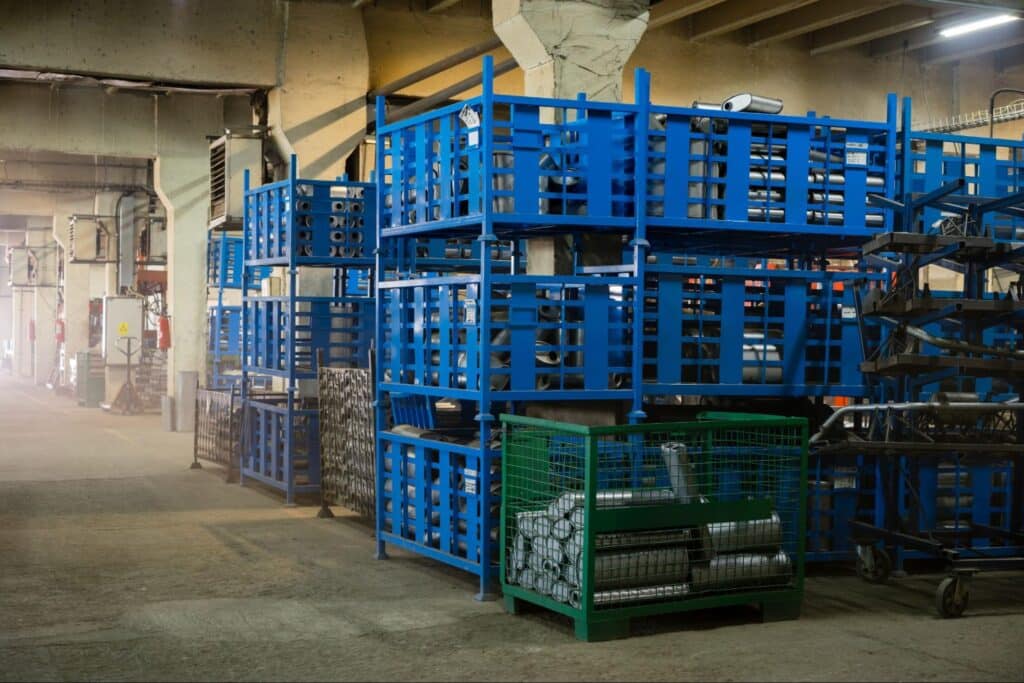
Making the switch to a returnable packaging system is a strategic decision that requires careful planning to maximize its benefits. While challenges exist, they can be effectively managed with a proactive approach. This checklist outlines the critical factors to consider, helping you navigate the process for a smooth, efficient, and profitable implementation.
1. Initial Investment vs. Long-Term ROI
Focus on the complete financial picture beyond the initial purchase price.
- Calculate the Total Cost of Ownership (TCO): Have you analyzed the full lifecycle cost? This includes not only the upfront investment but also the projected savings from eliminating disposable packaging, reducing freight costs, and minimizing product damage over time.
- Project Your Return on Investment (ROI): What is your target timeline for the system to pay for itself and start generating savings? A well-designed system can often achieve a positive ROI in 18-36 months.
- Identify Indirect Savings: Are you accounting for “hidden” cost reductions, such as lower labor expenses (no more building or breaking down boxes), reduced waste disposal fees, and fewer warranty claims due to better product protection?
2. System Design and Scalability
The physical design of your containers is crucial for both protection and efficiency.
- Ensure Custom-Engineered Protection: Is the packaging and its internal dunnage specifically designed to protect the unique geometry and sensitivity of your automotive components, from electronic modules to painted surfaces?
- Plan for Fluctuating Volumes: Can the system scale with your production needs? Discuss flexible options like lease or rental programs with your supplier to manage seasonal peaks or new product launches without a massive capital outlay.
- Verify System Integration: How will the containers interface with your existing infrastructure, including assembly lines, shelving, and automated material handling equipment like conveyors and AGVs?
3. Tracking, Management, and Reverse Logistics
A returnable system is only as good as your ability to manage the return loop.
- Select a Tracking Method: What technology will you use to monitor your container fleet? Options range from simple barcode scanning to more advanced RFID systems that provide real-time location data.
- Define the Reverse Logistics Plan: Do you have a clear, efficient process for collecting, cleaning, inspecting, and returning empty containers to the starting point? A sluggish return loop can cause production delays.
- Assign Ownership: Who is responsible for managing the container pool? Will this be handled by an internal team, your packaging provider, or a third-party logistics (3PL) partner?
4. Collaboration with Supply Chain Partners
Successful implementation requires buy-in from everyone in the supply chain.
- Communicate with All Stakeholders: Have you aligned with your suppliers, logistics providers, and internal teams (receiving, warehousing, line-side assembly) on the new procedures and goals?
- Establish Clear Handling Protocols: Is there a training plan in place to ensure everyone understands how to properly handle, stack, and return the containers to prevent loss or damage?
- Share the Benefits: Frame the transition as a partnership that will ultimately reduce waste, lower costs, and improve efficiency for everyone involved, not just a top-down mandate.
5. Maintenance and Container Lifespan
Proactive maintenance is key to maximizing the life and value of your packaging assets.
- Establish a Maintenance Protocol: What is your plan for regular inspection, cleaning, and repair of the containers? A well-maintained fleet will perform reliably for years.
- Plan for End-of-Life: What is the process for retiring and recycling containers once they reach the end of their service life? Choosing a supplier that uses recyclable materials reinforces your sustainability goals.
- Determine Service Responsibility: Will maintenance and repairs be handled in-house or managed by your packaging partner as part of a comprehensive service agreement?
By proactively addressing these factors, your business can ensure a successful transition to returnable packaging, transforming it from a simple container purchase into a long-term strategic advantage.
Partnering for Success: Why the Right Supplier Matters
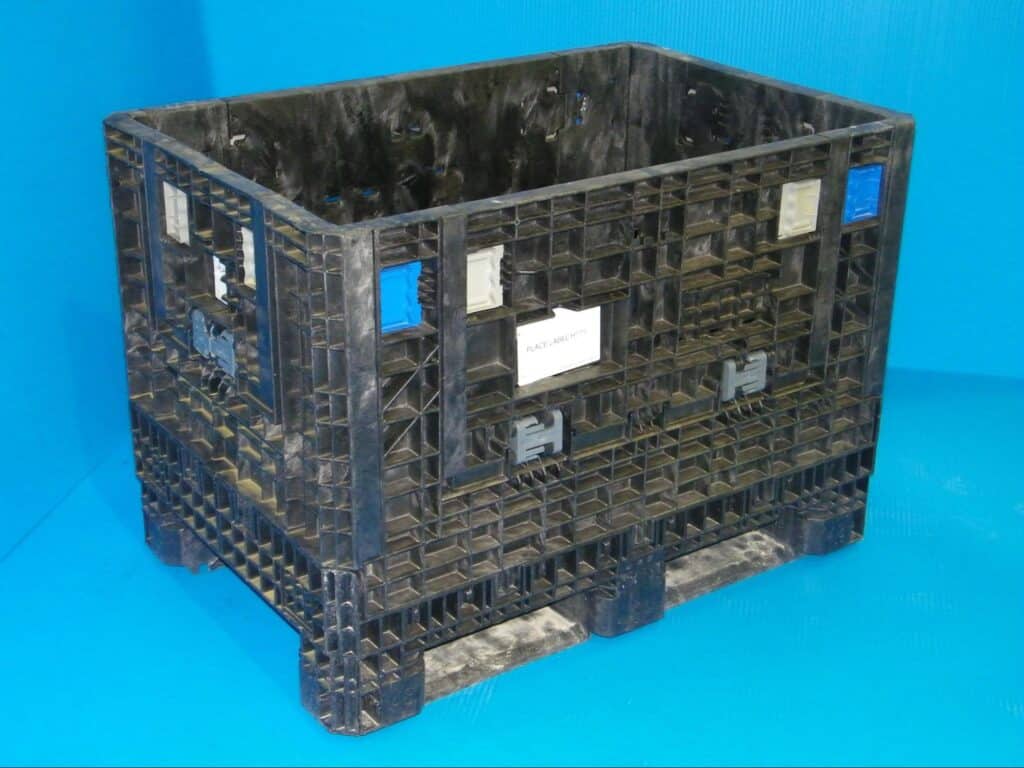
Navigating the complexities of implementation requires more than just containers—it requires a strategic partner. The right supplier provides the deep industry expertise and ongoing support needed to transform a returnable packaging program from a logistical tool into a sustainable competitive advantage.
At Universal Package, our role is to be that partner. We address the specific challenges of the automotive sector with a focus on expert design, operational flexibility, and comprehensive lifecycle management.
- Expert Design Consultation: We engineer custom solutions to protect your most sensitive components. Using durable materials like high-grade corrugated plastic and heavy-duty foam, our designs ensure everything from electronic modules to Class-A surfaces is optimized for safe and efficient transport.
- Flexible and Scalable Programs: To help you manage capital and adapt to fluctuating production volumes, we offer flexible lease and rental models. This allows you to scale your container fleet on demand without a large upfront investment, ensuring operational agility.
- Comprehensive Lifecycle Management: Our support extends far beyond delivery. We offer complete maintenance, cleaning, and repair programs designed to maximize the lifespan and reliability of your packaging assets, allowing you to focus on your core business.
Maximizing the Automotive Supply Chain with Returnable Packaging
Returnable packaging is one of several innovative solutions transforming automotive logistics by offering potential cost savings, enhanced sustainability, and improved operational efficiency. By transitioning from single-use materials to durable, reusable options, automotive companies can safeguard valuable components, support efficient supply chains, and achieve significant long-term benefits.
Partnering with a reputable provider like Universal Package facilitates a smooth transition to an optimized packaging system. Their innovative designs, expert support, and flexible options empower automotive businesses to address today’s logistical challenges effectively. Contact Universal Package today to learn how customizable packaging solutions can help drive your business forward.


